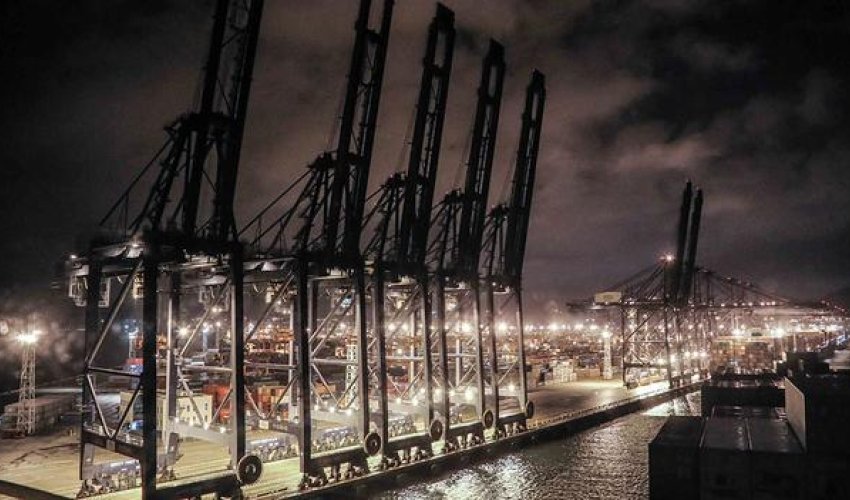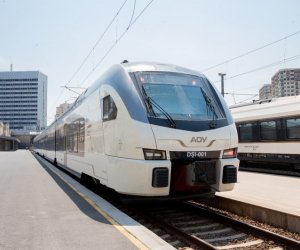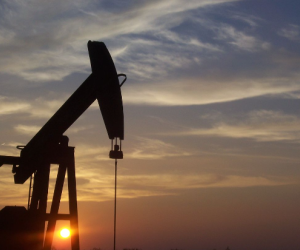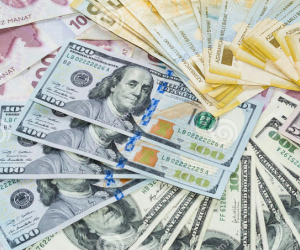The invisible network that keeps the world running

One of the world’s most dazzling engineering feats is largely hidden from view. Tim Maughan stepped on board a container ship to investigate the humungous, algorithmically-controlled network that supplies most of what you own.
It’s been just over 45 years since the Apollo Moon landings, and some would have it that we are failing to build big anymore; that we've since become too fascinated with the small, too impressed by our tablet computers, games consoles, and smartphones that we don't invest in grand, world-changing engineering projects.
Stand on the bridge of a container ship docked in a mega-port in Korea, however, and it's clear that's just not true. The global supply chain that brings us those tablets and phones, and pretty much everything else from our clothes and food to our toys and souvenirs, is nothing short of a moon shot itself – a vast, unprecedented engineering solution to a truly astronomical logistics problem. The fact that it's hidden from most people's sight, and that it has become so utterly reliable and efficient to the point of transparency, doesn't make it any less of an achievement of human technical endeavour.
To find out more about this huge, invisible network, I accompanied a group of architects and designers called the Unknown Fields Division for a rare voyage on a container ship between Korea and China. The aim of the trip was to follow the supply chain back to some of the remotest parts of China and the source of our consumer goods – and what we saw as we travelled through mega-ports and across oceans looked closer to science fiction than reality.
Early rise
We're picked up at 9am from our guesthouse in the Korean city of Busan by a local 'ground agent' for the shipping company Maersk, whose ship will be carrying us for the next week. They have at least one of these personnel handlers in every major port in the world, their job being to ensure crew members make their way through each country's unique and complex maze of customs and immigration bureaucracy, and on to their ships on time.
If you were asked to name some multinational corporate brands you could probably reel off half a dozen, from Apple to Coca-Cola, but chances are that Maersk wouldn't spring to mind. Yet the Danish shipping giant is the very definition of a multi-national corporation, with over 25,000 employees, 345 offices in 125 countries, 600 active ships, and more than 2 million containers moved every year. The company is estimated to be responsible for 20% of Denmark's GDP on its own. Maersk might not make any of the things you buy in shops, but it more than likely put a lot of them there.
As we drive along, Busan's dense mass of high-rise apartment blocks gives way to what will be one of the defining images of the next seven days; the giant cranes that line every major port in the world. Soon we're into the depths of Busan New Port itself, and speeding past endless, towering stacks of shipping containers until we're finally dwarfed by the huge, blue mass of the Maersk Seletar, the 320m- (1,050ft-) long, 80,000 tonne, 9,000 container capacity ship that will be my home for the next seven days.
It's not until we get out on to the towering balconies around the ship's bridge and look back at Busan that we're fully able to first comprehend the scale and nature of these Asian mega-ports. It feels like we're being given a rare look into a usually hidden space, a peek at the intricate but city-scaled machinery of global capitalism.
From that viewpoint – essentially high above the sea, looking into land – it's easiest to describe the ports as a sequence of layers. First, towering above and over the ship, are the loading cranes. Vast structures mounted on huge, four-legged frames, they resemble the naked scaffolding of unbuilt skyscrapers, and trigger nostalgic reminders of Saturn V rocket launch towers from the 1960s. Their sheer size makes them the first thing you see when you arrive at any port – whether from land or sea, and as staggering as they are they don't make their full impact until you see them move.
Future gaze
Built on tracks in the surface of the harbour-side, they slide left and right, parallel to the birthed ships, accompanied by a cacophony of warning sounds and robotic safety announcements. Once in port at night I saw one suddenly fire into life next to the ship in a stroboscopic explosion of lights, before it tracked slowly above my high vantage point, bathing me in the orange glow of a dozen small halogen suns. It was an intense experience.
(BBC)
ANN.Az




































 Photo
Photo 



 Video
Video 

